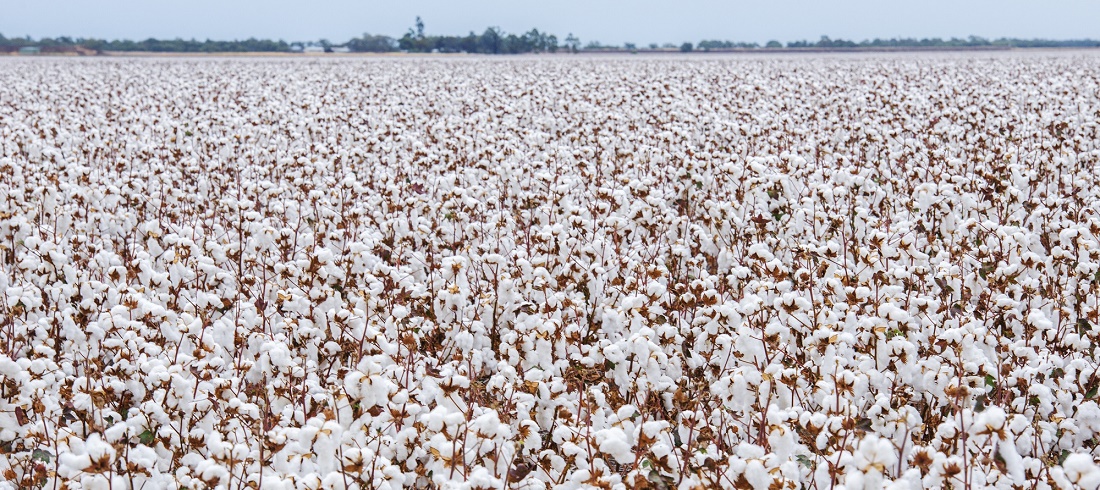
Brazil hopes to become world’s largest cotton exporter in 2023, surpassing U.S.
Dec, 14, 2022 Posted by Gabriel MalheirosWeek 202250
Brazil could become the world’s largest cotton exporter in 2023, with an increase in the planted area helping it to surpass the United States, according to producers in the South American country.
According to them, if the US reduces planting by 30% to make way for competing crops such as corn, soy, and wheat, the scenario of Brazilian leadership in the global market could become true. It’s a drastic cut, but it’s not entirely ruled out.
Brazilian cotton producers see the sector ready to move forward with next year’s crop, despite higher costs, in order to protect progress in Asian markets, particularly China.
While Brazilians started planting for the 2022/23 season (to be harvested the following year), Americans are still finishing harvesting the current season’s crop and making preparations for 2023/24, with harvest expected to occur in the calendar year 2023.
“We will soon be the world’s largest exporters, maybe already next year,” said Julio Cezar Busato to Reuters before handing over the presidency of the Brazilian Association of Cotton Producers (Abrapa) to Alexandre Pedro Schenkel, who will direct the group between 2023-24.
According to US Department of Agriculture (USDA) estimates, Brazil currently ranks fourth among global cotton producers – below China, India, and the United States – but is the No.2 exporter.
The South American country expects to increase shipments by more than 22%, Abrapa said this week, with the institution firm on obtaining a record harvest. Most of the cotton produced in Brazil is planted after the soybean harvest and comes from Mato Grosso and Bahia.
“I am confident that we will have opportunities next year. While others will back down, we will not,” Busato stated.
According to the association, cotton production should increase by 18% to nearly 3 million tonnes in 2022/23, with a recovery in productivity following some weather problems in the previous cycle, as the planted area should increase by over 1%.
“Mathematically, we should reduce the cotton acreage,” Busato said, noting production costs rocketed 27% after a surge in input price in 2022. “But we won’t do that as we must retain the markets we have conquered.”
Cotton’s path would be similar to that of soybeans, a market in which Brazil has outperformed the US as the largest producer and exporter for some time, while in corn, some believe that Brazilian exports may soon gain leadership, a condition that gives more weight to the nation in price formation in the world.
Consultancy hEDGEpoint Global Markets said cotton planting in Brazil should occur “within the ideal window” considering current climate conditions, leading to a growth in acreage and potentially helping pressure global prices – which are already “near or even below the cost of production” for US growers.
“It is too early to quantify how much cotton area the US will actually lose, but it clear that this crop is already at a disadvantage” to competitors such as corn, soybeans, peanuts, rice, and wheat, analyst David Silbiger said.
China as “Open Avenue”
Cotton is one of the most expensive crops to invest in, with a harvester costing around 7 million reais. Such equipment must pay for itself, which explains why many Brazilian producers produce cotton only to meet their financial obligations.
Busato cites the competitiveness of Brazilian cotton, which could, according to him, be twice as large as the productivity of the USA. Moreover, the Brazilian product has higher quality and provides traceability certifications, a feature that US crops do not have on the scale.
Brazil has already exported more than 700 thousand tonnes to China (in 2020/21), as much as it consumes internally. Still, it also ships large volumes, especially to Asian countries, such as Vietnam, Bangladesh, Pakistan, Indonesia, Malaysia, and Turkey.
Busato recalled that in the trade war between the US and China, which reached its peak about three years ago, the Chinese, taxed by the US, “opened an avenue (market to the Brazilian product),” which needs to be maintained.
According to Schenkel, the new president of Abrapa, the country is the only one capable of meeting the additional cotton demand in the coming years, as other competitors have only so much land to plant. Furthermore, he said, Brazil “has the advantage of not being anyone’s enemy.”
“The receptivity we have had on trips to Asia is always very positive.”
Source: Infomoney
To read the full original article, please read: https://www.infomoney.com.br/mercados/brasil-tentara-titulo-mundial-da-exportacao-de-algodao-ja-em-2023-dizem-produtores/
-
Shipping
Sep, 13, 2024
0
90 trips are estimated to be cancelled for the next four weeks
-
Ports and Terminals
Jun, 30, 2023
0
Gov’t agency proposes solution to Port of Itajaí bidding crisis
-
May, 12, 2025
0
VLI Sets Record for Sugar Cargo Throughput on Centro-Atlântica Railway Despite Lower Harvest
-
Economy
Jan, 04, 2022
0
Foreign Trade Secretary emphasizes the recovery of exports to the U.S and E.U

